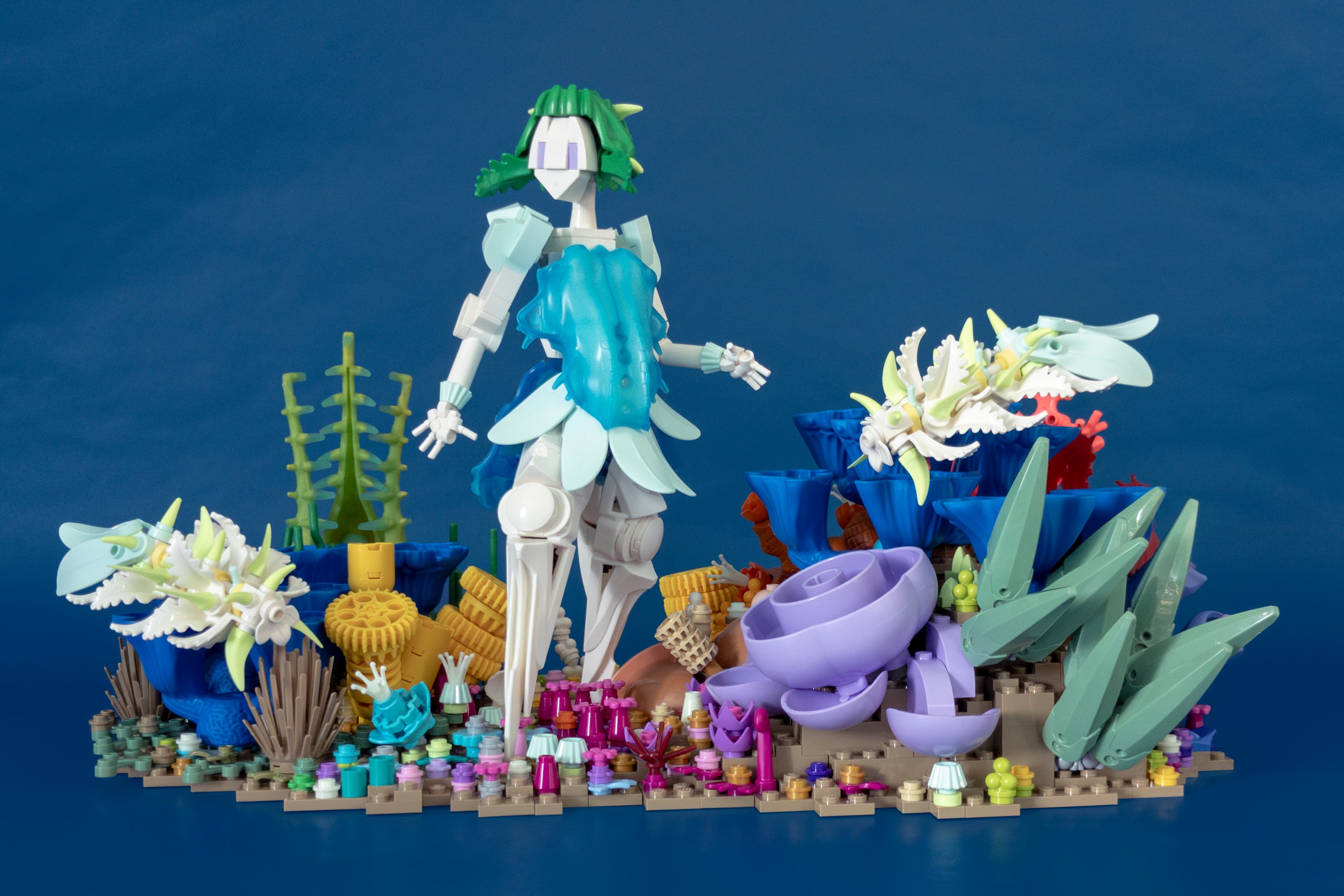

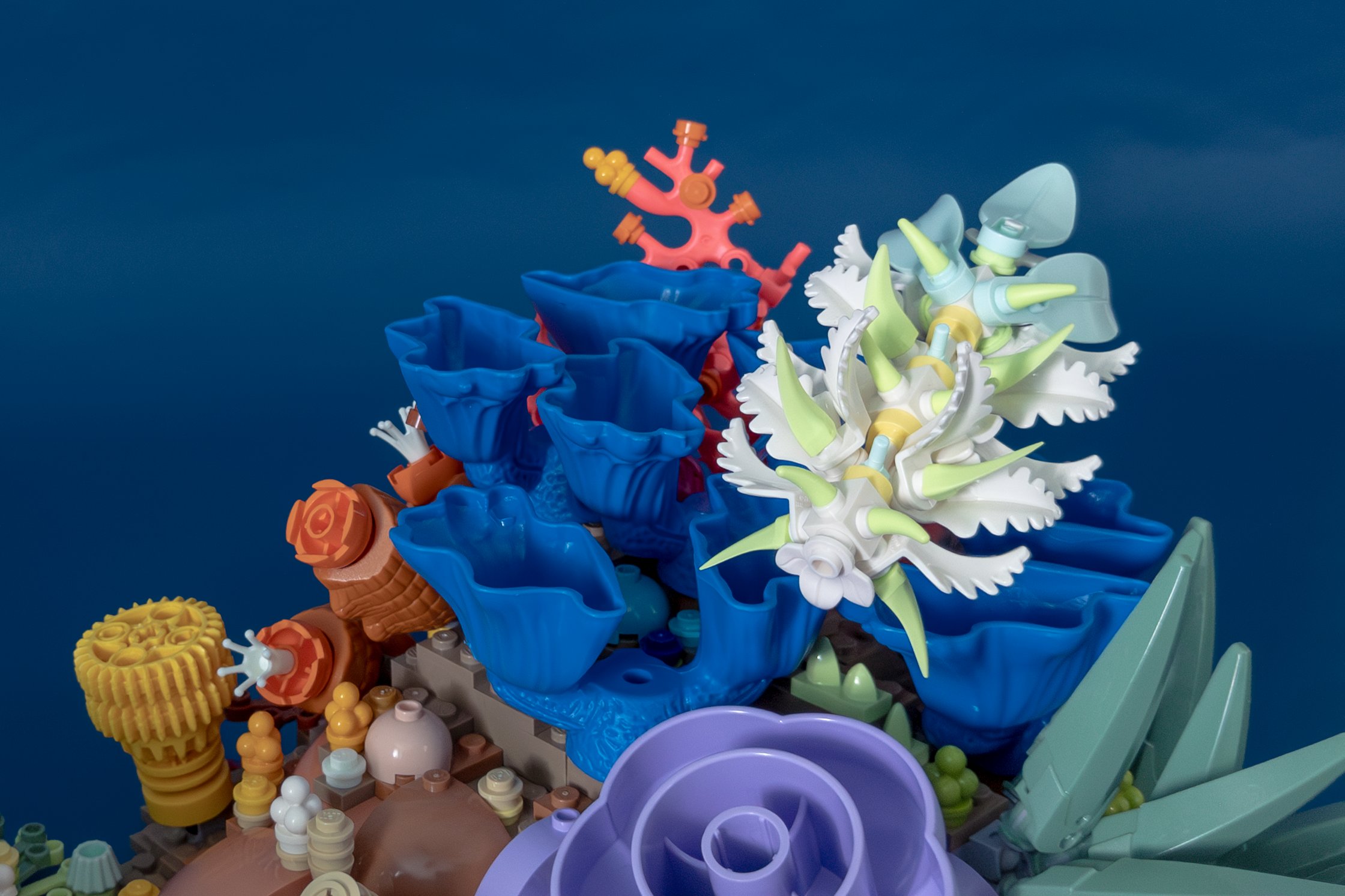
Tidepool Princess
Published
Brief
This summer, three themed challenges on Lego Ideas give builders a chance to have their work displayed at the Lego House in Billund, Denmark. The 20,000 Bricks Under the Sea theme calls for builds that embody the wonders of the oceans.
Builds must be specifically created for the challenge and be buildable with physical bricks, subject to some size constraints. Many of the winners from 2024 were huge, colorful creations that took full advantage of the available footprint.
The contest launched while I was traveling, and I spent the last weeks of June reworking some of my 2024 Bio-Cup builds for Brick Convention. (More on this soon!) But with just over a week before the challenge deadline, I was determined to put together something impressive.
Concepts and research
Earlier this year, I had tinkered with digital designs for some whimsical sea creatures, hoping to contribute some more ocean life for the BioniLUG Deep Sea collab. I imagined making a humanoid character that took on aspects of these creatures, standing in the midst of a reef or similar habitat.
When I saw the ocean-themed challenge, it motivated me to start planning this build—finding a way to execute the concept using (mostly) parts I had on hand in the limited time remaining.
I settled on using a dirona as the inspiration for my character. I really love the range of frills and tendrils that these kinds of sea slugs have.
Build
I wanted the central character to have a confident, curious vibe—someone at ease with the beauty and power of the ocean.
I started working on the head and torso simultaneously, trying out different shapes. Similar to my bard from BioCup, I found a Kanohi Nuva (mask)? to use for the hair. With both designs, I’m glad I was able to make use of the eye holes in the mask.
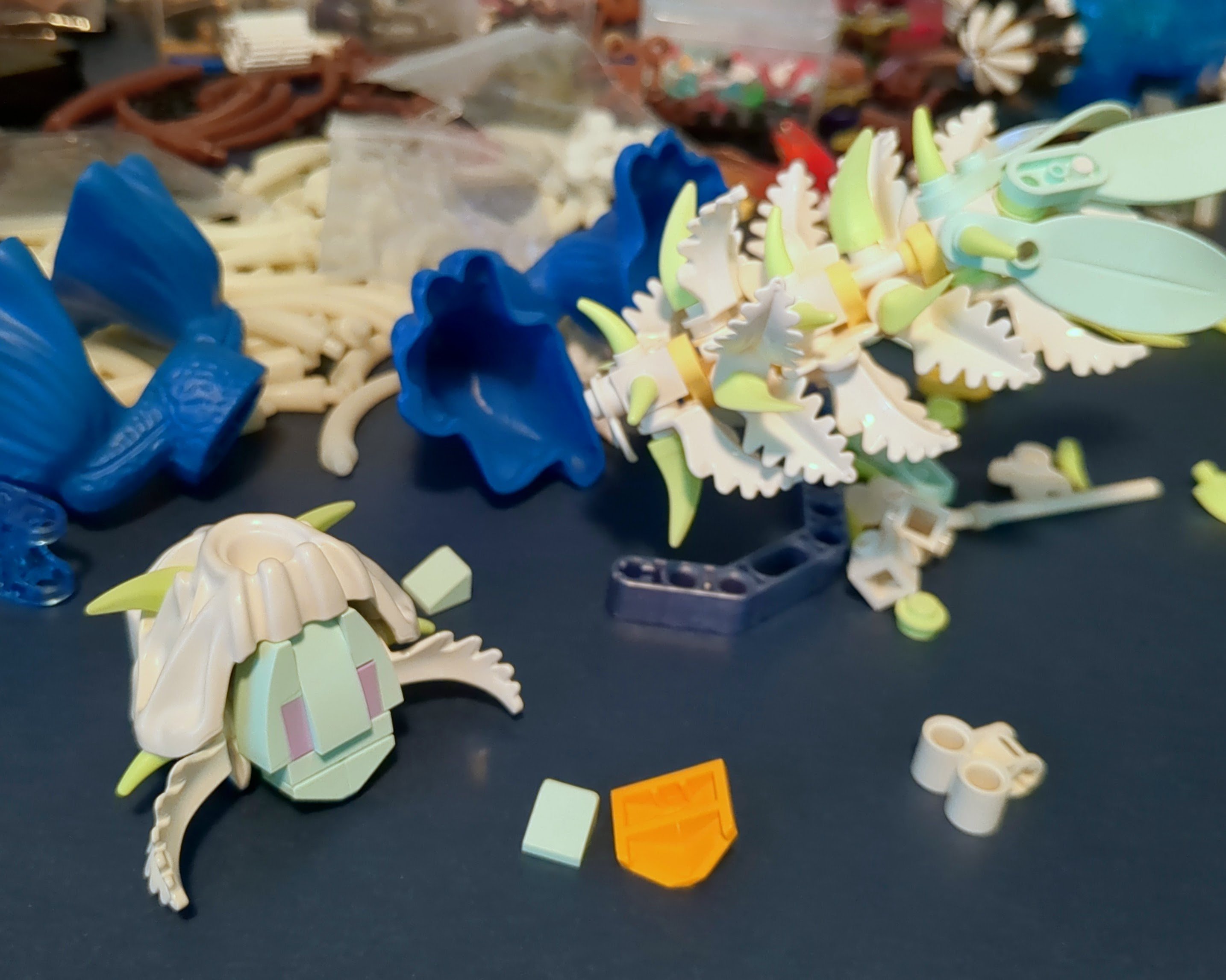
The dress is made from two transparent blue Bionicle Barraki heads?. The ridges and peaks on these parts ended up being a nice mirror to the ridges on the fern pieces used as both framing pieces for the figure’s hair and the dironas’ cerata.
Instead of the fiddly connections I often use for positioning large elements in my character builds, I opted for a rigid Technic frame to connect the halves of the dress. It kept me from spending time readjusting weak connection points while revising the design as I built out the torso and legs.
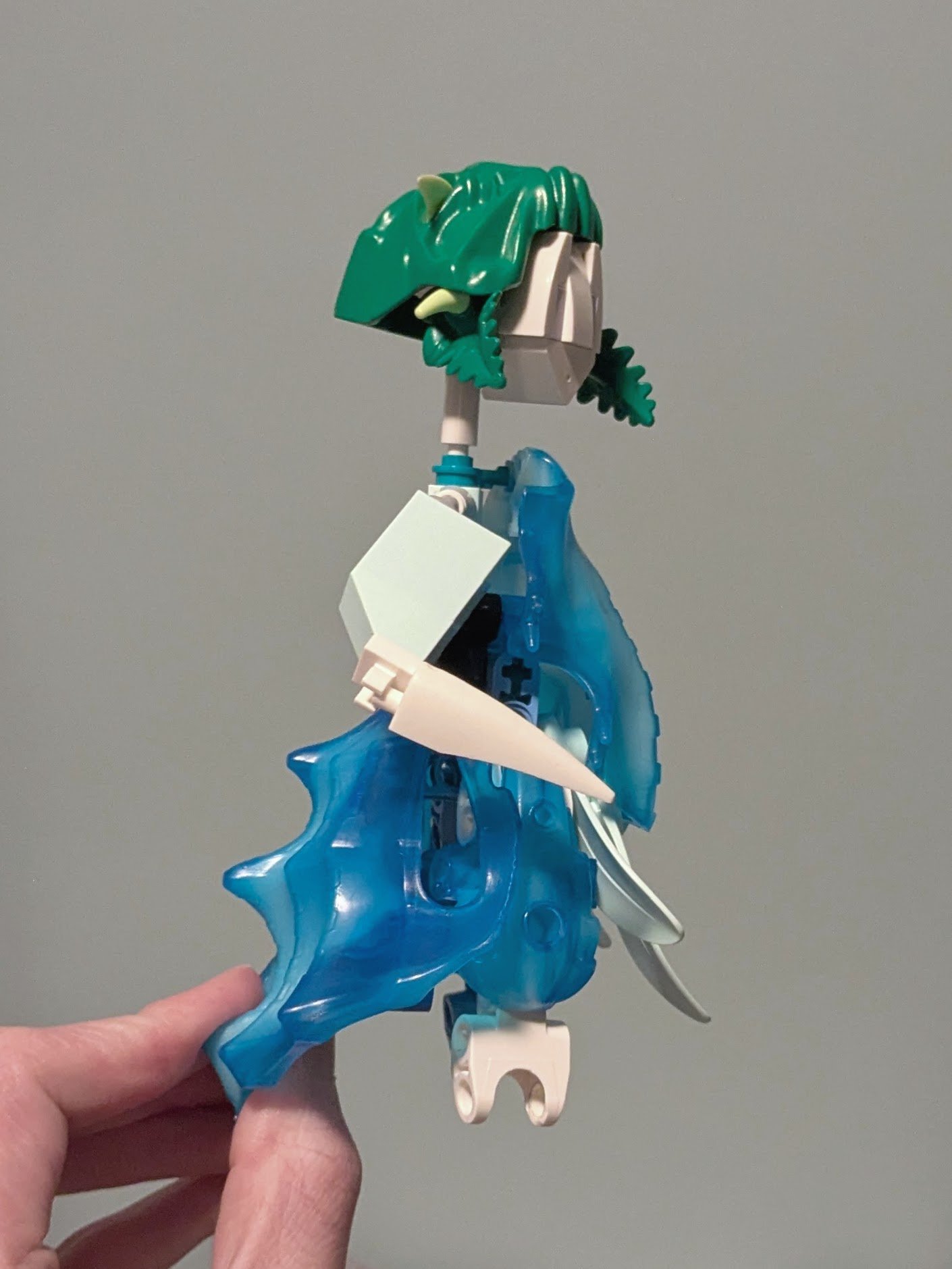
The legs aren’t articulated at the knees, but they still allowed for the range of poses I wanted. With the solid Technic construction, the figure is able to support itself if the feet are planted and the left shin is propped against something.
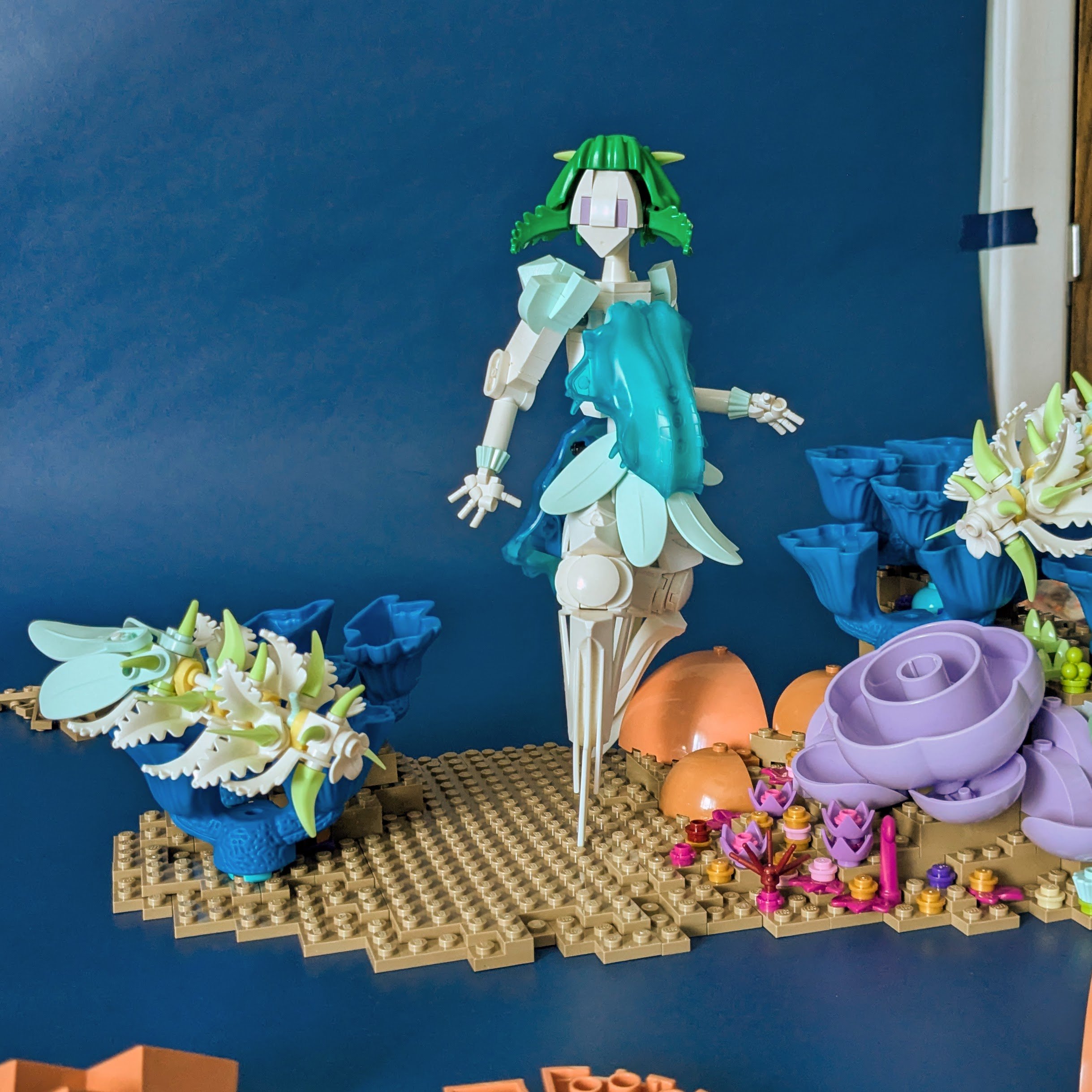
Presentation
Aiming for something that I’d be proud to see displayed for all angles, I filled the base with a wide range of colorful elements to represent plants, corals, and sponges. I had eyed the McDonald’s Galidor Nepol legs? as coral for a while, and I had a batch shipped in time to fill out the ends of the scene.
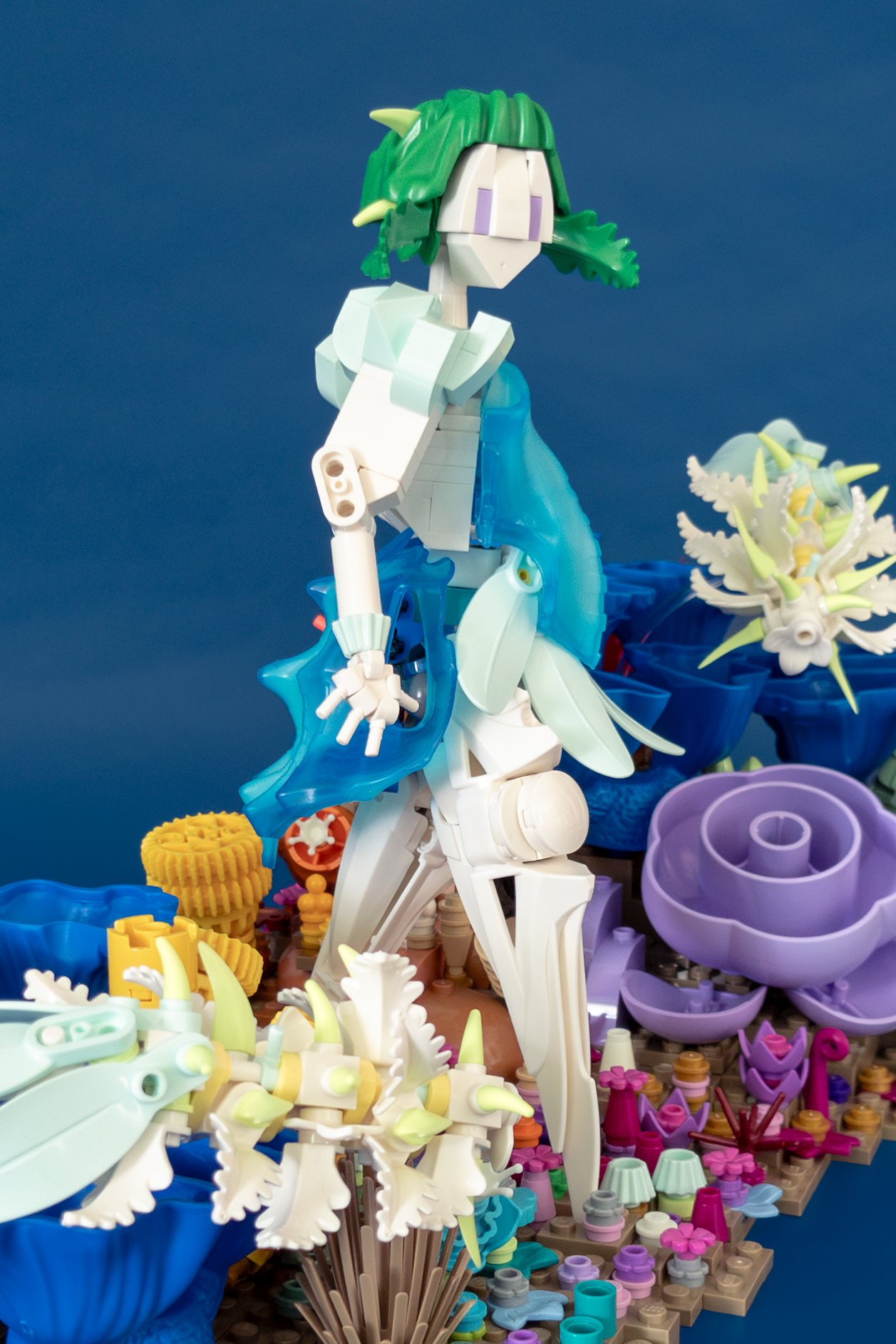

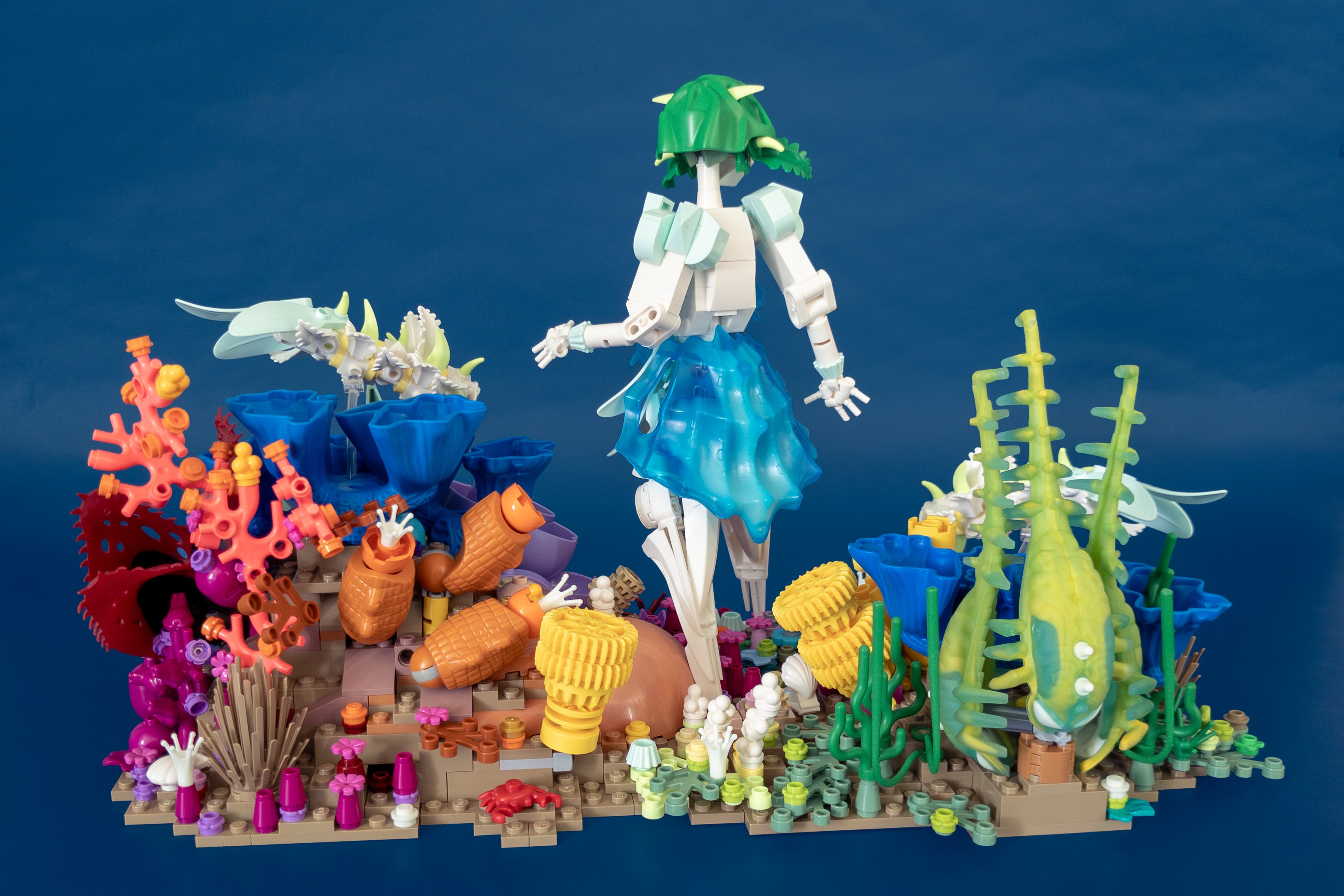
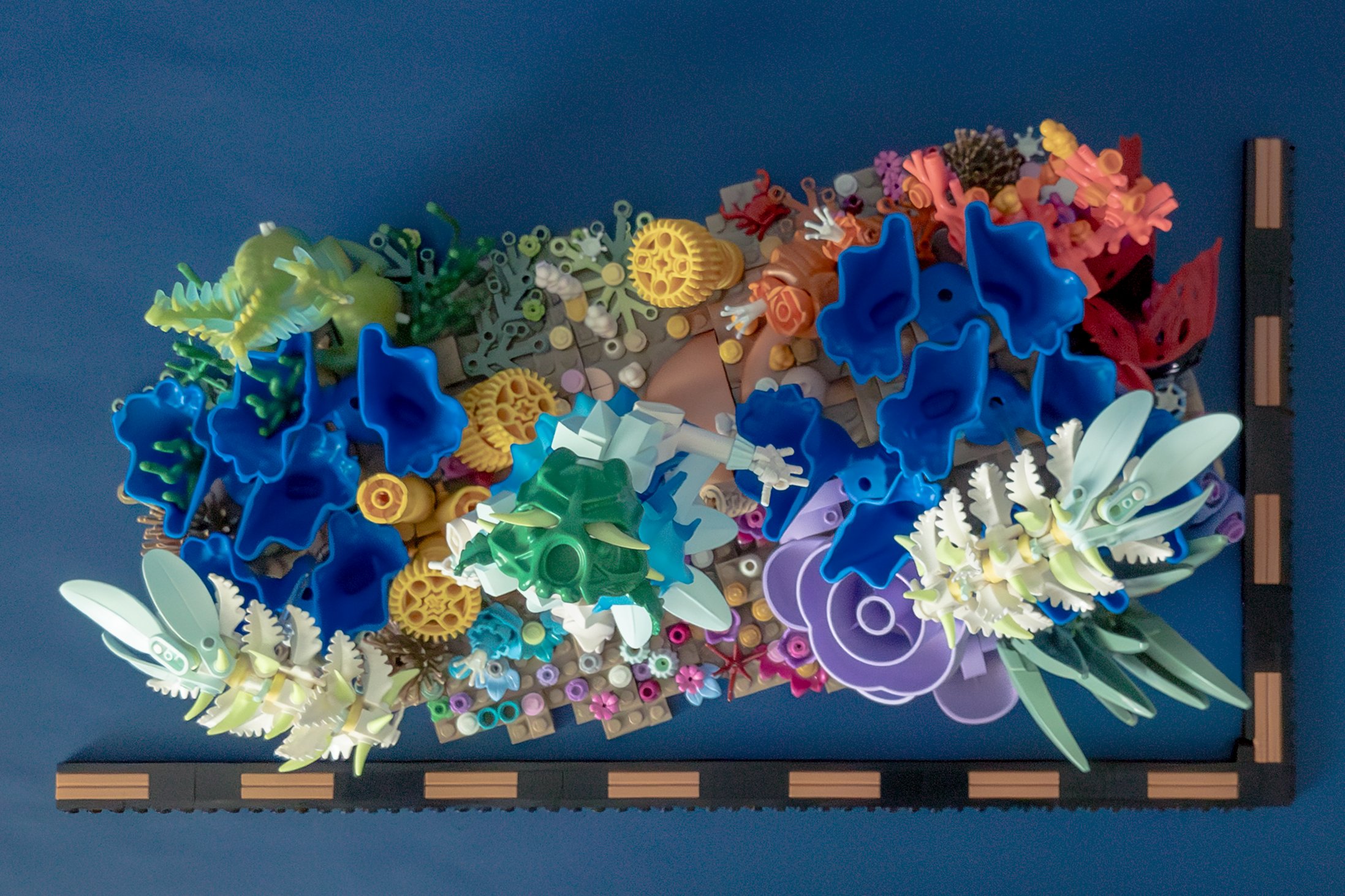
I’d heard about others having their Ideas challenge submissions rejected if they were close to the size limit, so I include one photo with a brick-built ruler in my entry to show that the entire model fit within the 64×32 footprint.
Reflections
I’m thrilled with how this turned out. Compared to my last humanoid figure, I think the proportions and personality are much stronger. I’m also glad to have a display piece that doesn’t need any extra cleanup to look nice from all angles, something that I’ve often neglected for other contest builds.
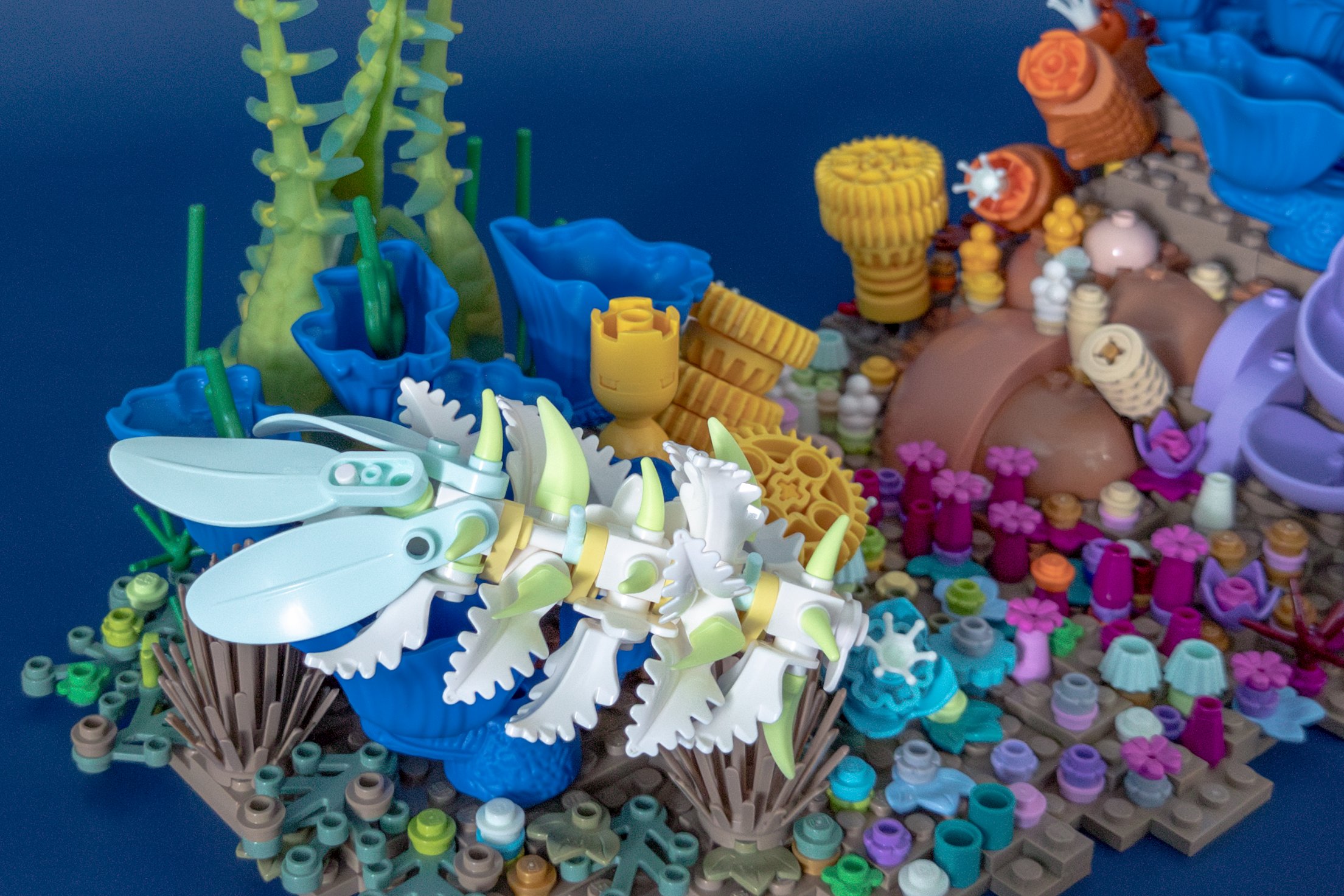
In retrospect, I wish I’d done more research about specific flora and fauna that would appear in the tidepool communities where Dirona picta and similar species are found. When building out the base, I often found myself filling the space with generic shapes—I think doing some more research could have unearthed some unusual sea life to translate into Lego.
What I learned:
- Trust that a bulkier Technic frame will still allow a smooth result—and the stability payoff is well worth it.
- Collect visual references for bases and side builds, not just the main model.
I’ve been looking for opportunities to share my work in addition to fan conventions and social media, so I’m thrilled at the opportunity to send this to the Lego House Gallery!